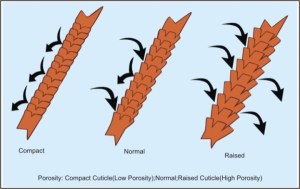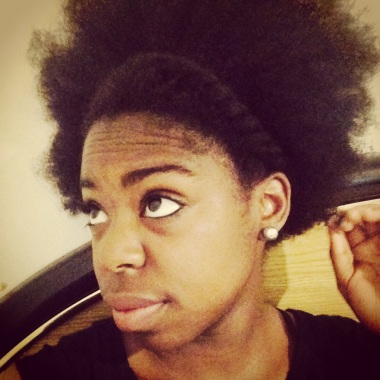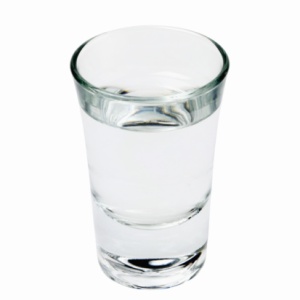Who lives in a Pineapple Under the Sea?
Absorbant and yellow and porous is he?
Almost everybody knows the Spongebob Squarepants theme song and anyone who is everyone can agree that he is a sponge.
And what do sponges do?
Not only do they clean dishes or scrub off muck from tables, but the most obvious thing they do is:
Absorb water.
Now, What does that have to do with my hair?
Well, Hair has a similar role.
Your hair absorbs water.
What is important to know on your hair journey is how much or how well water absorbs into your hair strands. Knowing how much water your hair can hold or how your hair reacts to water can help guide you into picking products that will properly support your hair growth. Not knowing can allow you to further damage your hair or stunt its growth.

Photo Credit: http://www.naturalhairrules.com
There is no way to measure your hair porosity level by simply looking at your hair and know how porous your hair can be. You can, however, utilize different tests to find out.
These tests are simple and easy to do at home, but before I get to what kinds of tests, let’s understand the different types of porous levels.
Low Porosity Hair
Hair with a low porosity level (or compact) means that the cuticle layers on the hair shaft are tightly shut or have little to no-lifting. People with this hair porosity level may find that their drying time is extremely long, this drying time could be from anywhere 24 hours or longer for their hair to naturally dry. People with this hair type are also prone to product build-up, meaning that instead of products absorbing into the hair strands, the product sits on top or your hair can become tough and heavy over time.
Medium Porosity Hair
Hair with a medium porosity (or normal) level require a small amount of maintenance. The cuticles on the hair shaft are slightly raised. Since the cuticle layers lift up they allow more moisture into the hair. This level of hair tends to hold styles well. However protein treatments should not be often added into this hair type as it could either harden the hair or allow it to be too mushy.
High Porosity Hair
Hair with High Porosity level (or raised) have highly raised cuticles. This could be a natural condition or it could’ve resulted in chemically processed damaged hair. This hair type can have gaps in the hair shaft where cuticles are missing allowing more damage and lessening the amount of protection it has. With this hair type balance is important because it is easy for too much moisture to enter into the hair strands as well as it is easy to loose moisture.

Photo Credit: http://www.naturalhairrules.com
Testing Hair Porosity
The Water Test
Fill up a cup of room temperature water. Preferably have a glass cup where you can see through the cup.
Take a few shed hair strands that are already on your brush or comb.
Drop a few hair strands into the cup
Wait about 2-4 minutes.
Results
If your hair sinks immediately you have high porosity hair
If it takes some time to sink you have medium porosity hair
If your hair doesn’t sink at all you have low porosity hair.
There are other tests to figure out your porosity level but the water test is the most common one.
I have low porosity hair which means products with a lightweight consistency are best for me since they will not weigh heavily on my hair.
Low Porosity Hair Products
Lightweight, liquid-based hair products such as hair milks are good, if you experience product build-up and heavy or tough hair with other thicker products. Also having ingredients that are humectants such as gylcerin or honey that will attract moisture to your strands. Another tip, is to condition with heat. Conditioning your hair with heat will lift the hair cuticles and allow moisture into the strands
Medium Porosity Hair Products
You can occasionally deep condition with protein products but do not include them often in your regimen. Keeping a balance between moisture and protein is what will keep your hair on good balance.
High Porosity Hair Products
Keeping Leave In Conditioners would be helpful since high porosity hair tends to loose moisture. Layering your hair with moisturizers (butters, lotions, etc.) and sealers (oils) can help lock in the moisture that you add in.
**Please note that every person’s hair is individualistic and unique. Please use what works for you and understand that no porosity level is better to have than the other but that understanding your porosity level can help you keeping your hair as best as it can be.**
For more information on different tests or a visual overview, you can check out GreenBeautyChannel’s Explanation on Porosity Levels at:

